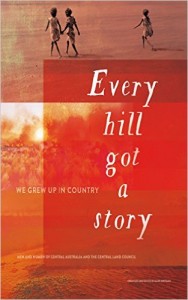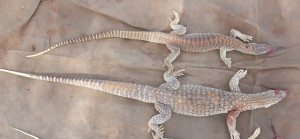Payi Linda Ford will deliver the Alfred Hook Lecture at 5pm on Wednesday 11 May 2016 at the Charles Perkins Centre Lecture Theatre, Building D17, Johns Hopkins Drive (off Missenden Road), The University of Sydney NSW 2006
Indigenous Australia News
A fruitful day in Copenhagen
No one likes the term ‘entomophogy’, and perhaps even fewer people know what it means. The title of the journal ‘Insects as food & feed’ is a deliberate move away from it, but even the term ‘edible insect’ is not unproblematic. According to GREEiNSECT researcher Afton Halloran, in many cultures the question ‘Do you eat insects?’ can get a negative response, whereas asking about a particularly species more often yields ‘yes’. Some Kaytetye speakers prefer the word ‘witchetty’ to ‘grub’; coining terms such as ‘whitewood witchetty’ and ‘river red gum witchetty’ as translations of the various edible larvae, a semantic extension also found in Kaytetye.
The pejorative overtones of English ‘grub’ and ‘insect’ reflects a preference in English to use a culinary name for animals as food. Consider ‘meat/animal’, ‘venison/deer’ etc. When the Kangaroo Industry sought a culinary term for skippy, they may have done better had they adopted marlu (Warlpiri) instead of the neologism ‘australus’. For ‘edible insects’ a similarly palatable set of sounds for English speakers might be tjapa (Western Arrarnta).
Every hill got a story oral history just out
Every hill got a story: we grew up in country w as launched this afternoon at Alice Springs Telegraph Station. A companion multimedia site is hosted by SBS Books. The substantial volume is sold by SBS Books and is also available on Kindle.
as launched this afternoon at Alice Springs Telegraph Station. A companion multimedia site is hosted by SBS Books. The substantial volume is sold by SBS Books and is also available on Kindle.
The volume by ‘men and women of central Australia and the Central Land Council’ is compiled and edited by Marg Bowman, carrying on from the late Jane Hodson, long term anchor of the CLC media section.
The 2014 ARC Cup
An astonishingly good ARC Cup run for Indigenous Australian languages. Onya! Good news for horses from PARADISEC, ELAC blog contributors and the new Centre of Excellence for the Dynamics of Language.
Amidst this joy, deep sympathy to the many people working in linguistics who put in terrific projects that didn’t get funded.
This is the field for Indigenous language work as I see it – if I’ve missed anyone, lemme know.
Myfany Turpin on Sand goannas in central Australian languages –
From Myfany Turpin
The names for ‘sand goanna’ (Varanus gouldii) in the languages of areas where they are found often correspond to two ethnospecies. Photographed here are the small arlewatyerre and the large aremaye, both from near Barrow Creek, NT, as they are called in Arandic languages (Arrernte, Kaytetye, Anmatyerr and Alyawarr). On this day my companions successfully hunted both in close proximity, so I thought I’d see if there were differences in the scientific taxonomy that could improve my translations of ‘small sand goanna’ and ‘large sand goanna’ respectively.
Kenneth L. Hale Award: Claire Bowern (Yale University)
Excellent news! Claire Bowern (see also Anggarrgoon) has been awarded the Kenneth L. Hale Award. Here’s the LSA’s commendation. Claire Bowern and her work is the embodiment of the qualities that the Linguistic Society of America would like to see in a Hale award winner. Claire has been involved with documentation of the Bardi language … Read more
Rejoicing at AUSTRALEX
AUSTRALEX held its biennial conference in a surprisingly green Adelaide, and the tall gums were filled with birds rejoicing. It was the biggest AUSTRALEX conference I’ve ever been to, a range of speakers from around the world, the first one with parallel sessions, and by far the greatest media coverage of any Australian linguistics/lexicography conference … Read more
Australian Aboriginal Language Materials in ELAR
If you are interested in Australian Aboriginal languages you might like to take at look at the growing number of collections of audio, video and text materials that are now available in the ELAR archive. Currently there are six online collections (comprising almost 900 file bundles) for languages from northern Australia, with one more from … Read more
Book launch: Kaytetye Dictionary
At the Aboriginal Languages Workshop at North Stradbroke Island last month, as usual there were things to celebrate. I had the honour of helping launch the Kaytetye Dictionary*. Book launches are a lovely way of thinking about and celebrating people’s work and ideas. Here’s what I said, more or less. Things I love about this … Read more
The living archive of Aboriginal languages – call for expressions of interest
CALL FOR EXPRESSIONS OF INTEREST DEVELOP A USER-FRIENDLY SEARCH INTERFACE AND TOUCHPAD APP FOR A DIGITAL ARCHIVE OF LITERATURE IN ABORIGINAL LANGUAGES THE LIVING ARCHIVE PROJECT Submission date: 30 April 2012 During the era of bilingual education in the NT, books were produced in 25 Literature Production Centres in more than 16 languages. These materials … Read more
 Follow
Follow